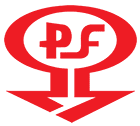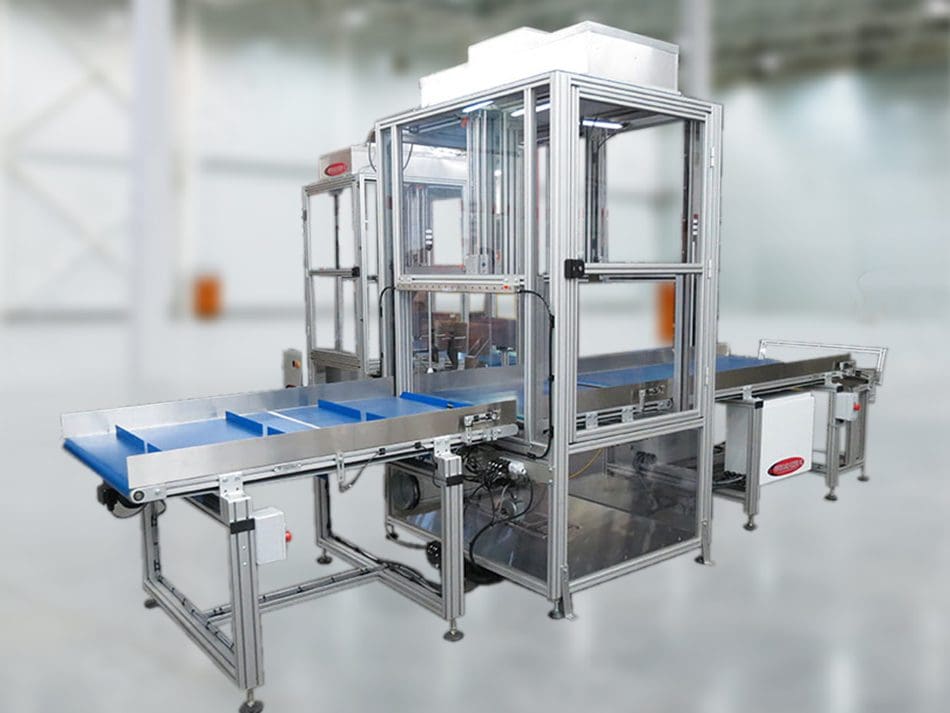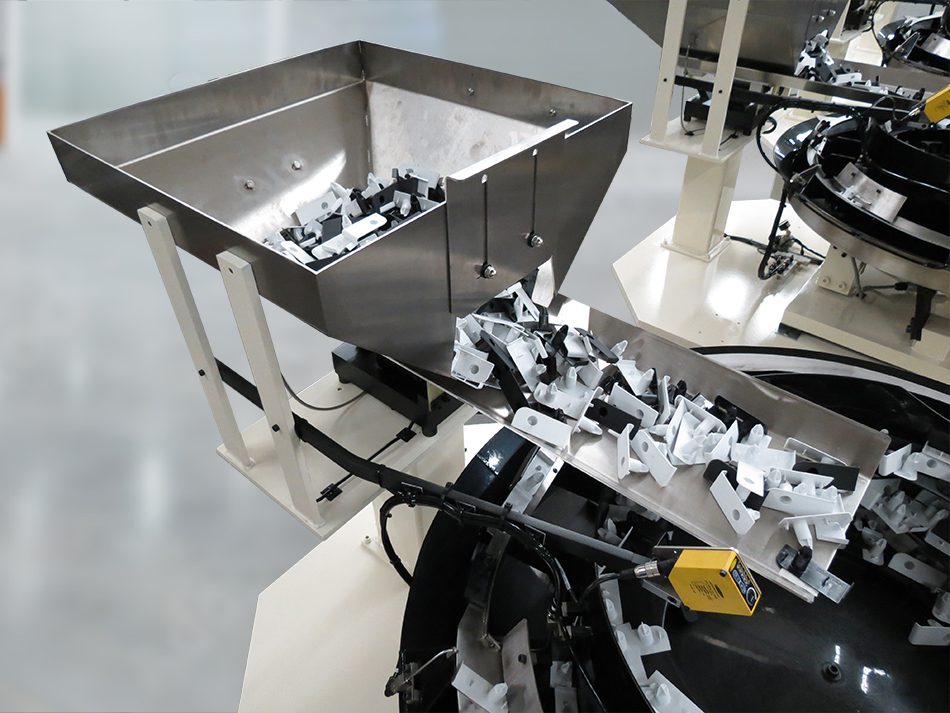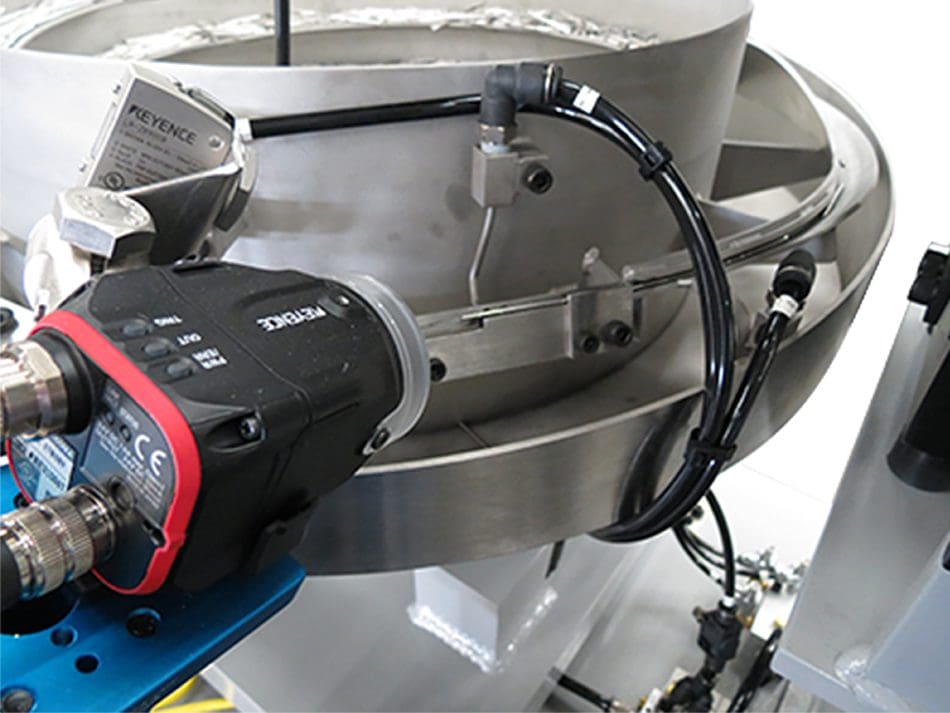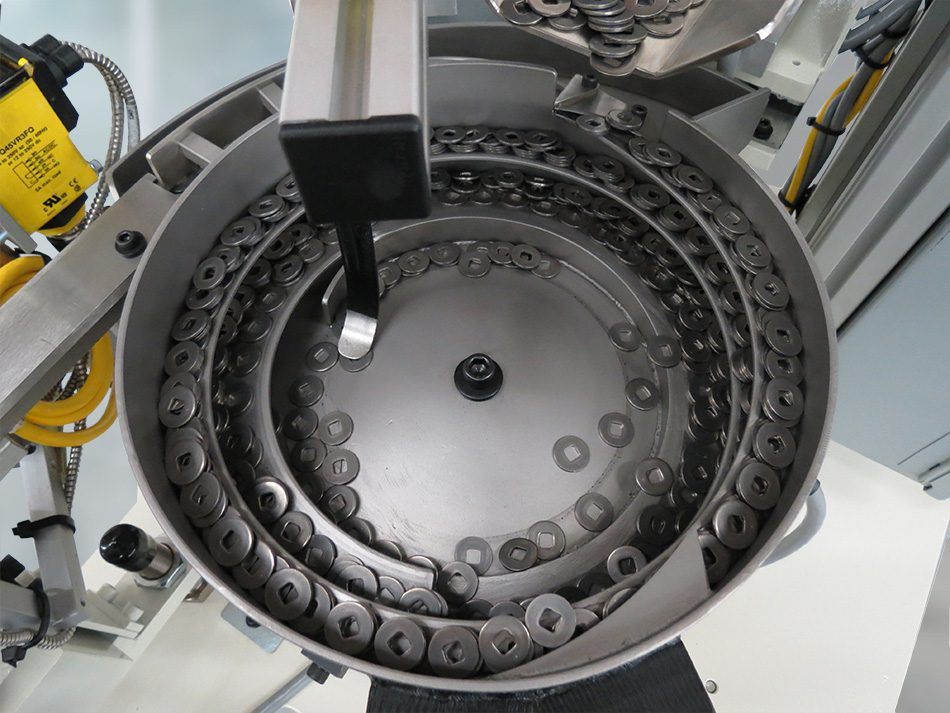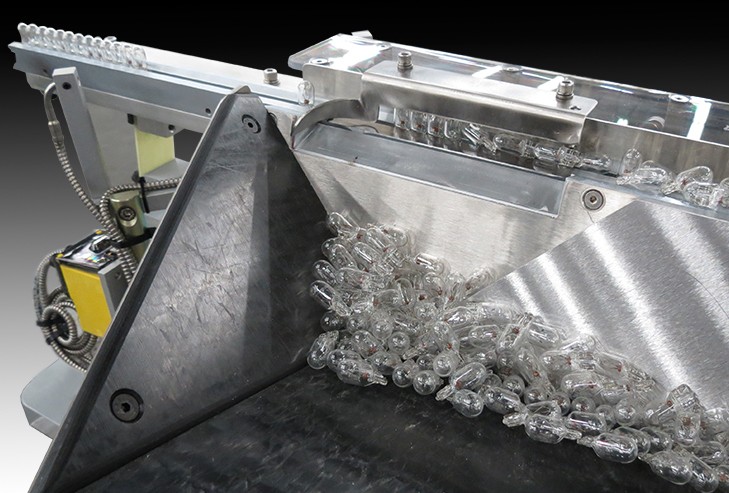We were approached by a medical device manufacturer who needed a solution for moving empty packages from a warehouse into a cleanroom for packaging with product, then moving the full packages back into the warehouse for storage and shipment. They required continual movement of product between the warehouse and the cleanroom while maintaining the integrity of the cleanroom environment.
Application Spotlight: Minimizing Part Damage in Vibratory Feeders
Application Spotlight: Minimizing Part Damage in Vibratory Feeders There are many ways we can reduce, and even eliminate, part damage in a vibratory feed system. Our latest case study shows how used Brushlon, a turf-like material, and unique construction techniques to feed a polished metal shaft where eliminating cosmetic damage was critical. Read the full […]
Vibratory Feeder with Gentle Parts Handling Features Minimizes Damage
This Brushlon-lined vibratory bowl feeding system was designed to feed two lengths of a polished steel shaft being assembled into a consumer product. Maintaining the cosmetic integrity of the parts was of utmost importance, so we designed a vibratory feed system that minimized the possibility of damage to the parts.
Case Study Featured in Assembly Magazine
Case Study Featured in Assembly Magazine Our latest case study, which is featured in the August issue of Assembly Magazine, shows how we integrated 4 vibratory bowl feed systems with a multiple-line and length belt conveyor system that included a custom isolation mechanism to orient and isolate multiple parts simultaneously for placement into an automatic […]
Turn-Key Vibratory Feeder With Bad Part Reject Feeds 2 Part Types into Assembly Line.
This vibratory feeder with custom conveyor belt tracking was designed to feed 2 styles of plastic parts into a consumer appliance assembly operation. The application required 4 lines of parts (2 lines of a left-hand version and 2 lines of a right-hand version), with each line alternating between the left-hand and right-hand part version. Each bowl feeder had to allow for the possibility of the wrong part being in the system, and an isolation mechanism was required so that 2 parts could be picked up from each line simultaneously.
Application Spotlight: Vision System Allows Orientation of Internal Part Feature
Application Spotlight: Vision System Allows Orientation of Internal Part Feature Vision systems extend the functionality of parts orienting systems by allowing us to orient parts that can’t be oriented by conventional methods. Our latest case study shows how we used a vision system on a vibratory bowl feeder to orient a part based on an […]
Vibratory Feeder With Integrated Optical Inspection System Orients Parts Based On Internal Features
This vibratory feed system was designed to feed a metal washer into a machine assembling a consumer product. While flat, round parts like washers are normally easy to feed, this part had a small indentation on one side that needed to be oriented facing down. A Vision System checked the part for correct orientation before discharging it onto a straight-line track and into the customer’s assembly station.
Application Spotlight: Custom Phamaceutical Grade Timing Belt Conveyor System
Application Spotlight: Custom Phamaceutical Grade Timing Belt Conveyor System Our custom conveyor systems can often fulfill requirements that can’t be met with “off-the-shelf” conveyors. This pharmaceutical grade conveyor system included custom mounting brackets and transfer plates to allow integration into an existing pharmaceutical packaging operation. Read the full story here.
FDA-Approved Stainless Steel Timing Conveyor Belt For Pharmaceutical Packaging
This custom timing belt conveyor was designed to feed pharmaceutical bottles through a pharmaceutical packaging operation.This pharmaceutical grade timing belt conveyor included complete stainless steel construction with FDA approved plastic side rails and a urethane timing belt.
Application Spotlight: Handling Fragile Parts
Application Spotlight: Handling Fragile Parts Step feeders excel at handling fragile parts. Our latest case study shows how we used a step feeder to orient and feed glass bulbs. Read the full story here.
